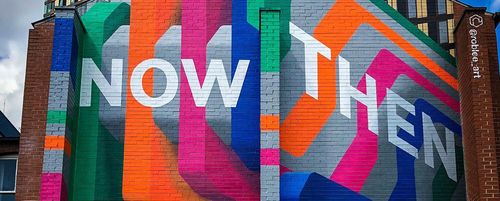

Organizational Effectiveness: What It Is and How to Improve It

18 July, 2025
Share this article
Table of Contents
Organizational effectiveness is about how well a company actually works. Not just ticking boxes or chasing numbers, but reaching real goals in a way that makes sense long term. It’s what happens when strategy, structure, culture, and people all move in the same direction without tripping over each other.
Of course, that’s easier said than done. Especially now, with hybrid work as the new normal and change showing up like it’s got a key to the office. Teams are in different places, communication needs more intention, and staying aligned takes work.
Still, when people know where they’re going and why it matters, everything clicks into place. Work flows better, engagement goes up, and results follow. It’s like rowing a boat: everyone’s paddling, but the real progress comes when they’re paddling together. And ideally not in circles.
That’s what organizational effectiveness is about. Not a buzzword, just a smarter way to work.

What Is Organizational Effectiveness?
Organizational effectiveness sounds like one of those big business terms, but the idea is simple. It’s about how well a company does what it says it wants to do. Not just on paper, not just in presentations, but in the actual day-to-day.
That means having clear goals, using resources wisely, and creating an environment where people can do great work without having to jump through hoops or decode vague priorities.
Some see effectiveness as an internal thing. Others look at the external results. In reality, it’s both. Think of:
- Teams that are aligned and know what they’re doing
- People who understand what matters and focus on it
- Customers who are happy to stick around
- Growth that’s steady and not just a lucky quarter
You can be busy and still not be effective. You can hit targets and still ignore cracks in the foundation. Real effectiveness ties everything together. Strategy, leadership, daily work—they all speak the same language.

Key Components of Organizational Effectiveness
There’s no perfect recipe for a successful organization, but certain ingredients show up again and again when things actually work. These are the pieces that shape how a company operates, adapts, and grows without falling apart every time something changes.
It usually starts with leadership. People need someone to trust, someone who can make clear decisions and keep things moving without creating chaos. Good leadership isn’t about having all the answers. It’s about creating direction and making others feel confident in the path ahead.
The rest builds from there:
- Structure that makes sense. When roles are clear and internal processes run smoothly, teams stop wasting energy figuring out who’s doing what.
- Culture that feels real. Not posters on the wall, but actual shared values and habits. It shows in how people treat each other and what gets recognized.
- Strategy that connects. Big goals are great, but they need to match what’s actually happening on the ground. Otherwise, they’re just wishful thinking.
- People who care. When employees feel heard, trusted, and part of something that matters, they show up with energy you can feel.
When all of this lines up, work feels better. Results follow. And you don’t need a motivational poster to make it happen.

Measuring Organizational Effectiveness
You can’t improve what you don’t measure. It’s as simple as that. Tracking effectiveness helps you see what’s working, what’s stuck, and where to focus next. Without it, you’re basically steering in the dark and hoping for the best.
There’s no single number that tells the full story, but there are a few signs that show whether things are on the right track. Look at your key performance indicators (KPIs) —things like productivity, profitability, and retention. Are teams delivering? Are people sticking around and growing?
Check in with your employees. Engagement and satisfaction say a lot about how the day-to-day feels. If people are motivated and supported, it shows up in their work.
Customer feedback matters too. If your clients are happy and keep coming back, chances are your internal systems are doing something right.
And don’t ignore how smoothly things actually run. Efficient processes make everything easier. On top of that, innovation is a good test—are new ideas being turned into action, or just sitting in slides?
None of these metrics tell the whole story alone, but together they give you a clearer picture. Not just of what you’re doing, but how well you’re really doing it.

Organizational Effectiveness Models
There’s more than one way to understand how an organization actually works. Over time, different models have helped leaders figure out what drives real effectiveness. How things are built. How people work together. How results take shape.
The McKinsey 7S Framework is one of the classics. It looks at seven connected elements: strategy, structure, systems, shared values, style, staff and skills. The idea is that change only sticks when all of these move together.
The Competing Values Framework is about balance. It helps organizations manage the tension between structure and flexibility, and between focusing inward and responding to the outside world. It’s especially helpful in times of cultural change.
Other models look at different pieces. The Strategic Constituency Model asks whether key people—employees, customers, investors—are getting what they need. The Goal Attainment Model looks at whether the organization is meeting its own objectives. The Systems Model sees the organization as a web of inputs, processes and feedback loops, all working together.
No single model fits every situation. But each one offers a new perspective. And sometimes, a better question is all you need to move forward.

Improving Organizational Effectiveness
Effectiveness starts with clarity. People do better work when they know what they’re aiming for, how to get there, and why it matters. It’s not about doing more—it’s about doing what counts, together.
Here’s where to begin:
- Align goals and strategy. Make sure everyone’s heading in the same direction. When priorities are clear and shared, the work feels more focused.
- Keep communication open. Teams don’t need endless updates, but they do need to know what’s going on. Clarity saves time and avoids guesswork.
- Support your leaders. Strong leadership isn’t about control. It’s about creating stability, especially when things shift.
- Simplify what slows you down. If a process is clunky, fix it. Clear systems free up space for real work.
- Stay flexible. Change isn’t the exception anymore. The teams that adapt quickly tend to stay ahead.
- Listen to the signals. Whether it’s data or feedback, pay attention. It helps you spot what’s working—and what’s getting in the way.
You don’t need a full reset. Just a few steady improvements, done with intention. That’s how you build a stronger, more effective organization.

Organizational Effectiveness in the Hybrid Work Era
Hybrid work has changed not just where we work, but how we work together. With teams spread across locations and time zones, staying aligned takes more effort. Communication needs to be clearer. And that shared sense of direction? It doesn’t happen by accident.
One of the biggest challenges is visibility. Leaders can’t support what they can’t see. And for employees, feeling out of the loop can quickly lead to disengagement. That’s why connection and clarity matter more than ever.
Alignment is also harder to maintain. Goals can slip through the cracks, and collaboration slows down without the right systems in place.
This is where platforms like Pluria help:
- Teams know where and how they’re working
- It’s easier to meet face to face when needed
- Everyone stays in the loop, no matter where they are
Effectiveness today means more than just clean processes. It means building connection and structure into everything you do—so work flows, even when people aren’t in the same room.

Conclusion
Organizational effectiveness isn’t just a business goal. It’s the foundation for how things run day to day—and how a company grows over time.
When things work well on the inside, results follow. People are clear on the goals, focused on what matters, and supported in doing their best work.
But none of this runs on autopilot. It takes regular check-ins, honest feedback, and the flexibility to adjust as things shift. What worked last year might need tweaking today. That’s part of staying effective.
If you’re looking to help your team stay connected and move with purpose, we’ve shared more thoughts on the blog: organizational effectiveness.
Leadership
Keep up to date with our most recent articles, events and all that Pluria has to offer you.
By subscribing to the newsletter you agree with the privacy policy.

In the last two years I’ve been working remotely from over 20 countries but no part of the world compares to Latin America: countries and cultures spreading over two continents with climates[...]
04 December, 2023

A massive move to hybrid work
In 2022, 60% of companies will switch to a hybrid working model, and a third of them will fail on their first attempt to work from anywhere, Forrester p[...]
04 December, 2023

When the employees in the most innovative company on the planet rally against their CEO because he wants them back in the office three days a week, it is a sign that it is not enough to be innovative in tec[...]
04 December, 2023